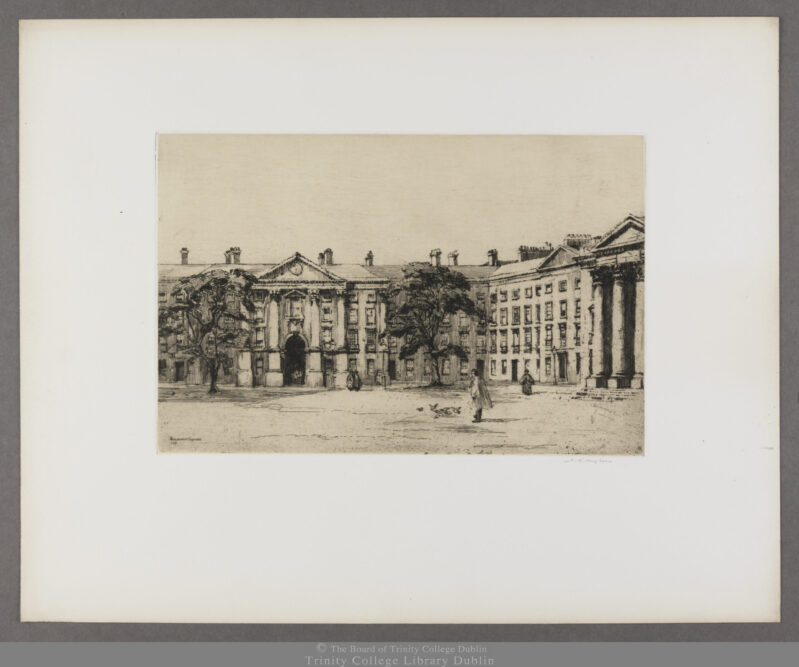
Throughout Irish history, Trinity has always played a key role, and examining the way in which artists have decided to portray it sheds light on the evolving concept of “Trinity”. The University Times sat down with the director of the Irish Art Research Centre, Dr. Angela Griffith, to discuss some of this artwork. She highlighted the etchings of Myra Kathleen Hughes, who pioneered the style in Ireland.
The etchings of Trinity are available on the Virtual Library catalogue in which people can access extensive archives. Hughes was a significant part of the movement at the turn of the twentieth century that made etchings a more widely used medium. In 1910, Hughes was the first person to hold a solo exhibition of modern prints in Dublin inspired by her work abroad. An artist committed to her craft, Hughes was part of the “many artists travelled [that] abroad to do training… the ambitious had to go abroad”. Her drive and ambition led to her prominence in the artistic community.
Griffith emphasises that in many ways, Hughes had to travel to London to become the artist that she was. However, she did not deviate from identity, as it “seems that she identified with the Irish revival”. She used her platform as an artist to draw attention to the division between British and Irish work. In 1907 she displayed her work at an international exhibition in Dublin under the category of Irish, despite Ireland not being an official country. She also occasionally shaped her initials as shamrocks, calling attention to her roots. Her choices are reflective of the broader Irish revival and show the importance of artists using their work.
Her five views of Trinity reveal what the campus looked like prior to the newer additions. Her use of shading and lighting techniques work in tandem to convey a sense of night in this piece, despite the difficult printing process in which the image is in reverse of what is etched onto a plate. In other work, Hughes experimented with “adding colour to her prints”, trying to capture different aspects. In this print, even the little details of the cobblestones in front of the library and the bench to the left are part of this wider sentiment of a quiet and empty campus. There are no people walking about, and your eye is drawn upwards to look at the building that is framed by the trees. The focus on the night captures a different side of Trinity than seen in her work of Front Square.
Hughes’ work depicting Front Square shows the hustle and bustle of the day. There are students walking and discussing topics while also feeding the birds. There is also a woman to the right of the image in a dress but her clothing indicates that she was not of high social standing.Trinity was largely perceived as a “bastion of learning separate from the working class of Dublin”. These prints convey this grandiose nature of Trinity. Shading here is depicted using lines and the architecture of the building is not platformed in the same way that it had been with the Old Library. This etching is more focused on capturing the vibrancy of campus as opposed to the quiet moments of stillness.
Griffith thinks that engaging with the artwork in these collections is essential because it can “help us think about ourselves today”. Hughes is especially important due to her ability to give prints a larger platform in the Dublin art scene along with capturing Trinity. All of these etchings are available here, where everyone has free access to these works of art and more.






